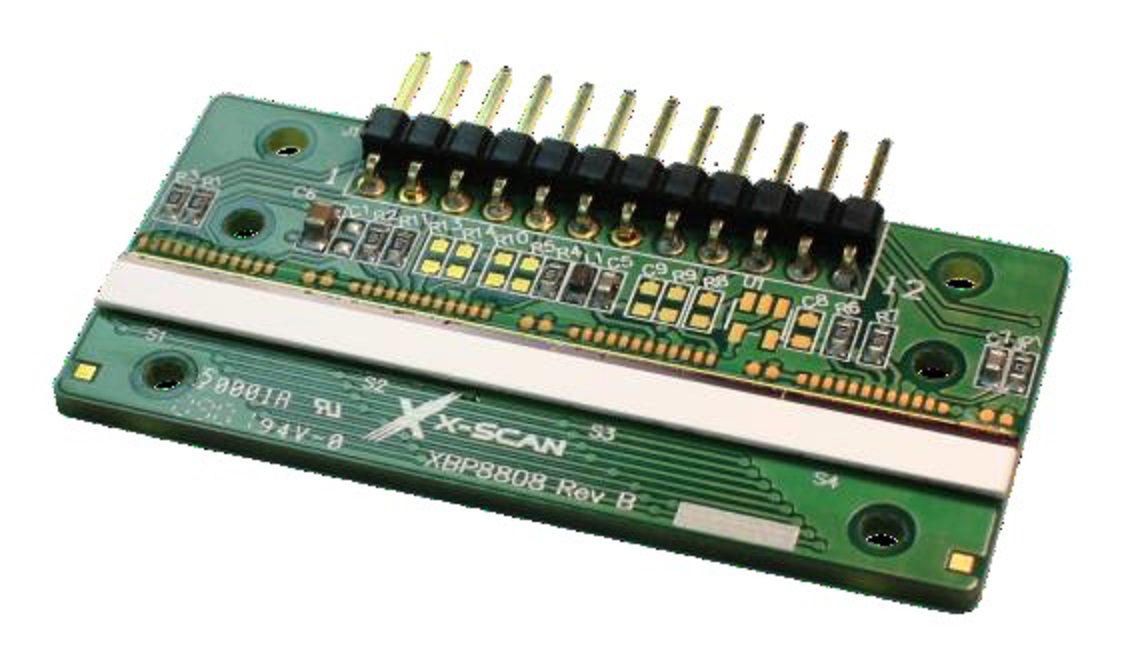Product information "XL8800 L-Shaped X-Ray Line Scan Cameras"
L-Shaped CMOS Photodiode Detector Array; Pixel Pitch 0.4, 0.8 mm; X-Ray Energy 40-160 kV; Length 822-1,182 mm; Line Period ≥0.35-≥0.9 ms; Scan Velocity ≤0.45-≤1.8 m/s
Developed for miscellaneous wheel inspection applications using panoramic x-ray sources, X-Scan Imaging’s XL8800 series of L-shaped x-ray line scan cameras is available in 0.4 and 0.8 mm resolution and with five detector lengths ranging from 822 to 1,182 mm. Other geometries can be provided as special requests.
At the heart of the XL8800 L-shaped x-ray line scan cameras are X-Scan Imaging’s CMOS silicon imaging detector array chips providing wide dynamic range, solid-state reliability and high performance.
A wide selection of scintillation material converts x-rays into visible light for detection by the imaging array and optimizes both sensitivity and resolution. The close proximity of the analog-to-digital converters (ADC) to the detector chips minimizes interference noise.
A collection of hardware for interfacing to computers and software including drivers and an intuitive application programming interface (API) with sample code expedites development of x-ray scanning systems. The XL8800 L-shaped camera is ideal for X-ray wheel inspection applications.
Key Features:
- L-Shape Optimized for Wheel Inspection
- Length: 822 to 1,182 mm
- Rounded Corners for Reduced Corner Distortions
- Integrated X-Scan Imaging Proprietary Detectors
- Standard Energy Range: 40 to 160 kV
- Wide Selection of Resolutions: 0.05 to 1.6 mm
- Software-selectable Resolution
- Low Noise
- Wide Dynamic Range
- High X-Ray Sensitivity
- High MTF
- 16-bit Analog-to-Digital Conversion
- Scan Rates: >2,000 lines/s
- Variable Scan Speeds With Position Synchronization
- Maximum Scan Velocity: 0.45 to 1.8 m/s
- Minimum Line Period: 0.35 to 0.9 ms
- Software Development Kit, Including Device Drivers, Libraries and Standard API
- X-Ray Inspection Software With Standard Features
- Compact & Rugged Housing With Minimal Cabling
- Modular Design for Expeditious Customization of Length and Shape
Applications: Wheel Inspection; X-Ray Inspection Using Panoramic X-Ray Sources





